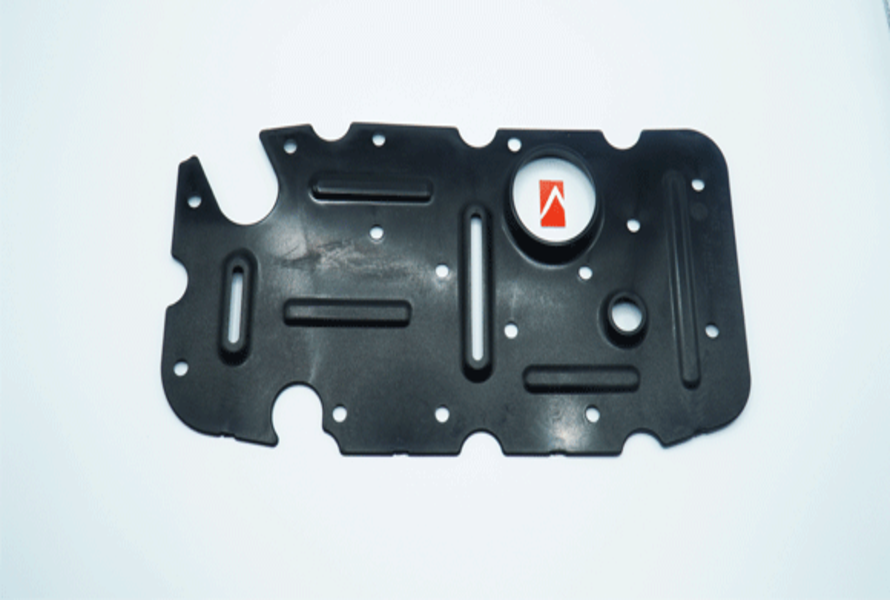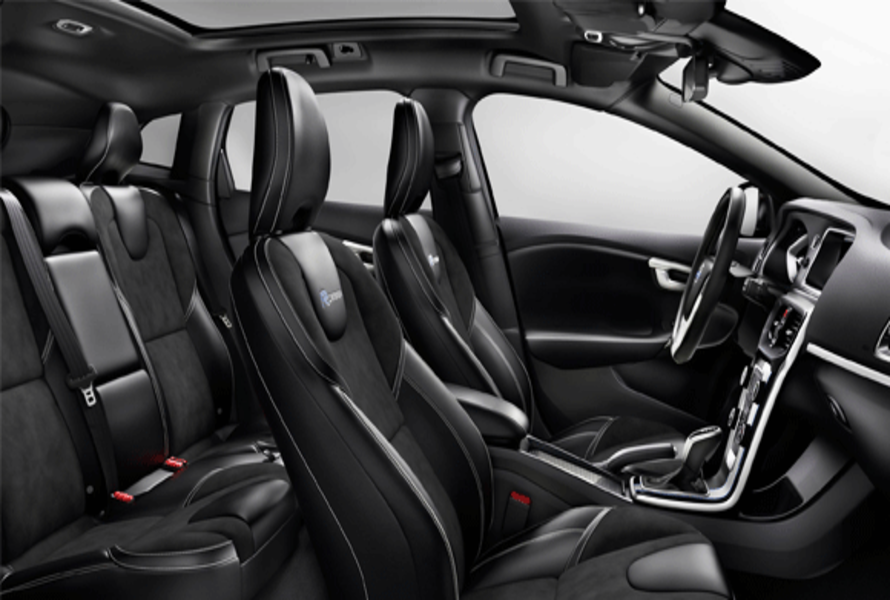If glass bead PP compound are widely used in the fields of automobiles, household appliances or home furniture, then glass fiber is also the perfect choice for the industry of manufacturing GRP plastic, FRP materials or reinforcing components for many polymer products. It can be seen that both materials have outstanding features and separate functions. In this article, EuroPlas will compare in detail each aspect of glass bead PP compound with glass fiber to help manufacturers make the most optimal decision in choosing input materials. Don't miss it!
.png)
PP compound glass beads are combined with glass bead additives.
1. Overview of 2 types of glass bead PP compound and glass fibers
Glass bead PP compound is simply understood as a mixture of high-grade engineering plastics created from 3 main components including: PP plastic base, glass beads and suitable additives according to customer needs. Basically, glass bead PP compound have the same advantages of traditional PP plastic base and glass beads.
Meanwhile, glass fiber PP compound also have the same composition as above but are replaced by glass fiber additives. glass fiber PP compound are made from PP base resin, glass fibers, and other additives. It helps the final product increase flexural modulus and tensile strength. With those high performance properties, polypropylene reinforced with glass fibers provides superior strength for furniture, electrical equipment and automotive applications.
.png)
PP compound fiberglass has main ingredient is fiberglass
If the PP engineering plastic base has 4 characteristics: odorless, colorless, tasteless and non-toxic to health, then glass beads have durability, the ability to withstand pressure and high thermal stability thanks to their spherical shape. Therefore, the original PP plastic beads will be reinforced with pure mechanical properties and reduce the mass of the final product. On the other hand, glass fibers also demonstrate typical characteristics. Although they are quite fragile and slightly brittle, the material achieves very high flexibility when in fiber form.
With the same characteristics as glass bead PP compound, glass fibers also have stable heat resistance when they still retain about 25% of their basic properties when exposed to a temperature of 1000 degrees Celsius. Finally, glass fibers are also highly appreciated for their waterproofing ability thanks to the connection of very thin fibers. This also indirectly increases the material's high elasticity.
2. Direct comparison between glass beads and glass fibers
In order for customers and manufacturers to have the most comprehensive overview of glass bead PP compound and glass fibers, EuroPlas will directly compare their 3 core factors, specifically as follows: Durability and mechanical properties, processing and manufacturing process, insulation and heat resistance.
2.1. Durability and mechanical properties
Glass beads have a standard hardness of 5.5MOH, which is quite average on a scale of 10. However, with a surface coverage ranging from 2.4 - 2.6 g/cm3, glass beads when combined with other plastic substrates will form a hard and durable surface for the final product.
Meanwhile, hardness is almost the most outstanding feature of glass fibers. Experts confirm them to have a surface hardness equivalent to steel fibers of the same size. Furthermore, many glass fibers are woven together to produce a hardness equivalent to kevlar fibers - about 5 times that of steel.
In terms of toughness and flexibility, glass fibers are also more highly valued than traditional glass beads because glass fibers are produced at a temperature of nearly 1700 degrees Celsius and the method of stretching into thin fibers with a diameter of only 4 - 34 μm. Therefore, glass fibers are very easy to mold to form many different product shapes such as: Mesh, fabric,...
Although glass fibers are more dominant than glass beads in terms of flexibility, manufacturers will choose the form of beads or fibers to blend into their PP plastic base to help PP plastic materials become lighter and more durable
PP plastic is widely used in many key industries.
2.2. Processing and production process
Basic glass beads are created by heating at a temperature of about 1000 degrees Celsius. The molten glass will continue to go through the molding process to form the desired shape. Finally, the glass beads will be cooled and the surface will be polished so that the glass beads reach a certain hardness. In addition, using glass beads helps to reduce product cooling time by 15 to 25% during the injection molding and extrusion process, thereby speeding up the processing cycle and increasing productivity.
Meanwhile, the fiberglass processing process is a bit more complicated than glass beads. They also go through the stage of mixing raw materials by machine and melting in a furnace at a temperature of nearly 1700 degrees Celsius. After completing this process, the molten glass will be fiberized to form fibers.
.jpg)
Fiberglass components have the characteristics of durability, heat resistance and product corrosion resistance.
The mixture will be passed through a platinum alloy liner and will be cooled immediately by water jets as soon as it reaches the end of the pipe. A high-speed winding machine catches the molten streams and because it rotates at high speed, tension is applied, pulling them into thin fibers with a diameter of 4 - 34 μm
Therefore, glass beads are not only considered to have an easier processing process but also save production costs compared to glass fibers.
2.3. Heat insulation and heat resistance.
These are two basic capabilities of materials prepared from glass. Basically, both glass beads and glass fibers are heated at temperatures above 1000 degrees Celsius before being shaped into different shapes.
In addition, manufacturers will also supplement PP compound plastic in general with flame retardant additives to significantly improve these two capabilities. However, PP compound glass resin particles will tend to be more resistant to abrasion of the final product. Meanwhile, glass fiber can still retain about 25% of its mechanical properties when exposed to 1000 degrees Celsius.

Application of PP compound glass beads in the production of car fuel tank caps
Therefore, EuroPlas concludes that fiberglass is superior to glass beads in terms of insulation and heat resistance over a long period of time
3. So which PP compound should you choose?
As analyzed above, glass bead compound pp aims at abrasion resistance, increased cooling capacity and preventing the formation of cracks on the surface of the final product. In addition, the cooling time and product insulation is shortened by 15 - 25%, so this is a suitable material in the furniture, home appliances and automotive industries.
Meanwhile, glass fiber compound pp helps increase hardness, reduce shrinkage, improve impact resistance and heat resistance for finished products. Therefore, they are also commonly used in household products such as: Rice cookers, electric kettle handles and automotive equipment. Notably, it is also the perfect choice for the construction materials industry.

PP glass compound applied in the automotive industry
In addition, the input material cost of glass bead compound pp will be cheaper than fiberglass because of their production process. Under these in-depth analysis and comparisons, EuroPlas advises manufacturers to consider their financial resources and their main product lines to choose the best raw materials.
In general, both glass bead and glass fiber PP compound aim at 3 factors: Quality - economy & efficiency for all production processes. In particular, they are also materials that do not affect the health of consumers and are easy to recycle and environmentally friendly. In addition, supplier selection is also an equally important factor that customers should consider.

PP compound glass beads ensure material properties for furniture products
4. About EuroPlas's glass PP compound products
Glass-filled PP compound is one of the core products of EuroPlas, we provide both glass bead and glass fiber PP compound to help customers choose comfortably. Each EuroPlas product has its own unique properties as follows:
With glass bead PP compound, manufacturers can increase the hardness, transparency, compressive strength and thermal stability of your product. The advantages of glass beads are high transparency, compressive strength and thermal stability due to their spherical shape. In addition, glass bead reinforced plastics can also improve mechanical stress.
With EuroPlas fiber glass PP compound, we offer a variety of PP glass fiber compounds with different fiberglass densities, including ECP PP 10GF, ECP PP 20GF, ECP PP 30GF, ECP PP 40GF and ECP PP 50GF. It helps the final product increase the flexural modulus and tensile strength. With these high performance properties, fiberglass reinforced polypropylene provides superior strength for furniture, electrical equipment and automotive applications.
EuroPlas has detailed the core features and properties of glass bead PP compound and glass fibers. In addition, we also help customers answer the question of whether to choose glass bead PP compound or glass fibers. Please continue to follow EuroPlas to update the latest news about plastic products in general and filler masterbatch in particular!